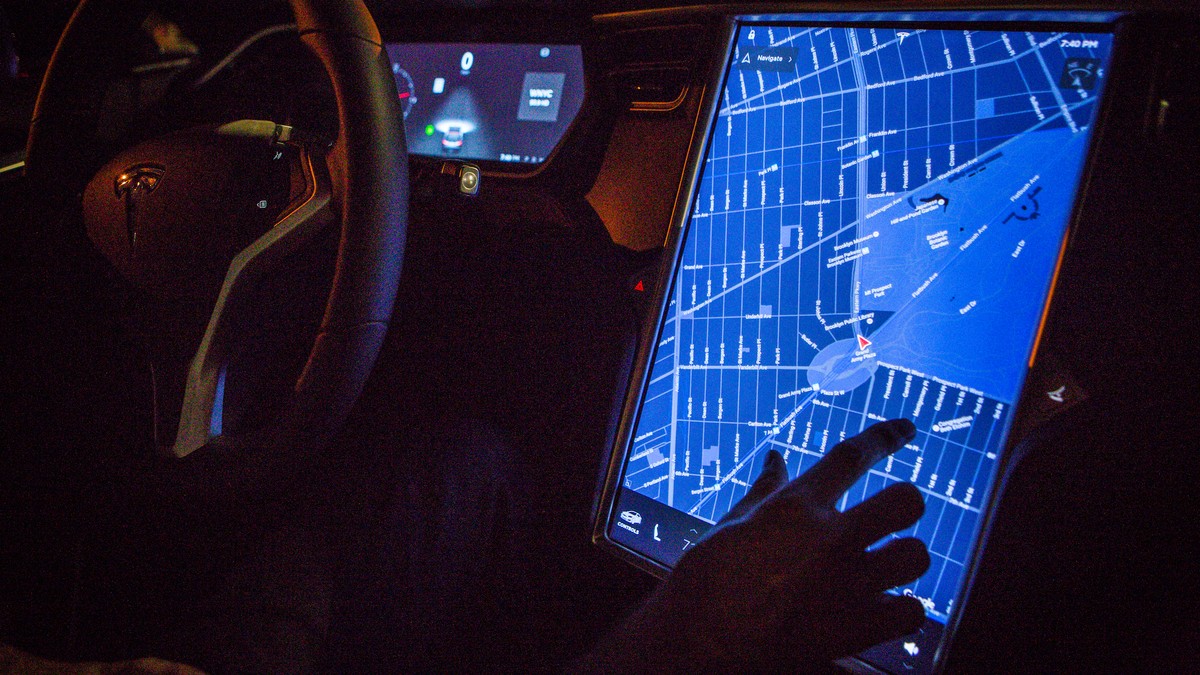People Are Jailbreaking Used Teslas To Get Features Expected

People have certain expectations when they buy a car. For example, they expect it to work for years afterwards needing only basic maintenance. They also expect that the purchase price includes ownership of not only the physical car itself but all the software that runs it.
Tesla doesn’t agree.
Last week, Jalopnik ran an article about a person who bought a used Tesla from a dealer—who in turn bought it at auction directly from Tesla under California’s lemon law buyback program—advertised as having Autopilot, the company’s Advanced Driver Assistance System. The entire Autopilot package, which the car had when the dealer bought it, costs an extra $8,000. Then, Tesla remotely removed the software because “Full-Self Driving was not a feature that you had paid for.” Tesla said if the customer wanted Autopilot back, he’d have to fork over the $8,000.
Tesla clawing back software upgrades from used cars is not a new practice for the company. “Tesla as a policy has been doing this for years on salvage cars,” said Phil Sadow, an independent Tesla repair professional. One former employee, who used to work in an official Tesla service center and asked to remain anonymous because he still works with Tesla in another capacity, said he was told to put the software features back if people complained to avoid bad publicity. He left about a year ago.
But that doesn’t mean Tesla owners are helpless. Sadow and others have ways to push back against Tesla by jailbreaking the cars and getting the features owners feel are rightfully theirs.
“As far as I am concerned removing a paid-for feature, regardless of the state of the car, is theft,” Sadow said. “It’s as if a bunch of guys show up in a van and take your upgraded 20″ wheels. Just because it’s software, it’s no different.”
Do you work for Tesla or know anything else about its policy towards used vehicle parts and software? We’d love to hear from you. Using a non-work phone or computer, you can contact Aaron Gordon at aaron.gordon@vice.com or aaronwgordon@protonmail.com.
Teslas function more like consumer electronics than traditional vehicles. Similar to smartphones and laptops, the cars receive software updates over the air that affect everything from the infotainment system to the car’s road performance and range. For example, Teslas with dual motors are sold with an optional performance package that, among other physical features like a different interior, improves acceleration and top speed for an extra $8,000 to $20,000, depending on the model.
While every car company offers different “trims” that vary the car’s styling and performance, Tesla is the only car company that we know of that remotely disables those performance features via software update (few other automakers even offer OTA updates and those that do are limited to things like the infotainment system and associated apps).
Tesla appears to have clawed back these performance features, too. Shortly after Jalopnik published its article, the dealer in question wrote in to tell them this has happened before:
I sell dozens of Teslas a year, and sold my father in law a Model X P90D with ludicrous speed package. 60 days after the purchase of the car, Tesla removed his ludicrous speed package. Upon complaints to them they said he never paid for it. We have video evidence and multiple pictures of the vehicle with it. They even removed the line under the P90D. I am still shocked at these acts.
The Model X performance package costs $20,000 more than the standard version, so, in effect, Tesla remotely disabled a performance upgrade that, on its own, costs as much as a brand new car. Tesla did not respond to questions about this story.
Teslas are notoriously expensive to fix, partially because the automaker retains a tight hold on parts availability. So when a Tesla gets into a crash, insurance companies are quick to declare them a total loss because the cost of repairs approaches the value of the vehicle. At that point, Tesla stops supporting the vehicle, meaning all warranties are voided and Supercharging is disabled, even after the repaired vehicle passes a high-voltage inspection by Tesla’s own repair staff.
A Tesla that doesn’t have access to the Supercharger network is hardly a Tesla. The Tesla Supercharger network is one of the company’s biggest selling points for its charging speed, convenience, simplicity, and integration into the vehicle’s on-board computer.
This is why specialists like Sadow have for years worked around this salvage title problem. They jailbreak Tesla’s software and restore the features one expects when they buy a Tesla.
“If the car originally had supercharging when sold, and has no HV [high voltage] safety issues, I turn it back on,” he told Motherboard via email. “If it had paid supercharging, I restore that.” He claims to have done this with “around 600 cars for hapless owners all over the globe.”
Experts like Sadow are engaged in a cat-and-mouse game with Tesla where the company will update the software—and occasionally the hardware— to try and keep them out, but it doesn’t stick for long.
Of course, jailbreaking the Tesla comes with consequences. Tesla repair YouTuber Rich Benoit told Motherboard that jailbreaking the software voids the warranty. That didn’t mean much when the car had been declared a total loss, which voided the warranty on its own. But in the cases of authorized used car sales such as the one Jalopnik highlighted, voiding the warranty could cost the new owner more than a few thousand bucks in the long run.
Sadow sees the act of salvaging so-called “total loss” Teslas as, paradoxically, part of Tesla’s corporate mission to promote sustainable energy. “We (collective white hats) have saved thousands of cars from the scrap heap and put them back on the road,” Sadow said. “That’s the only green thing to do!”
READ MORE HERE



